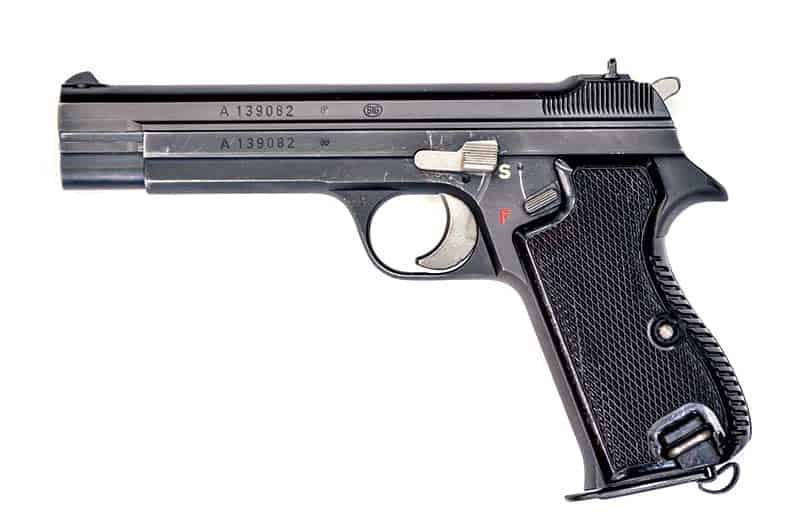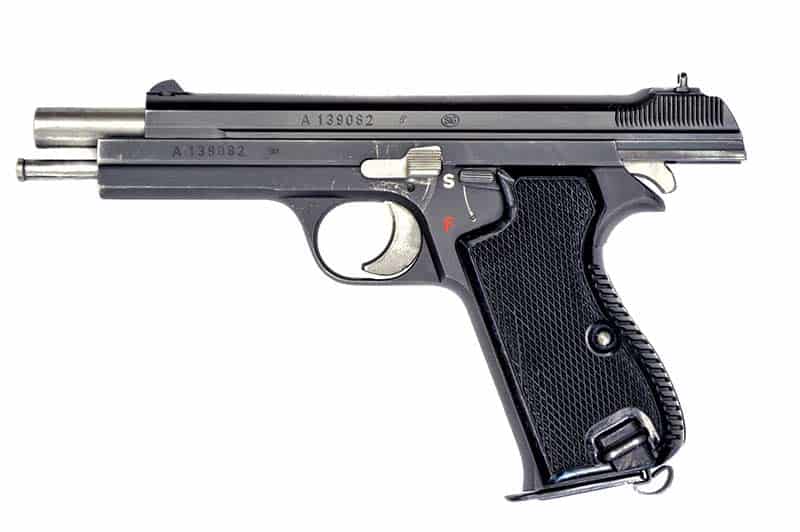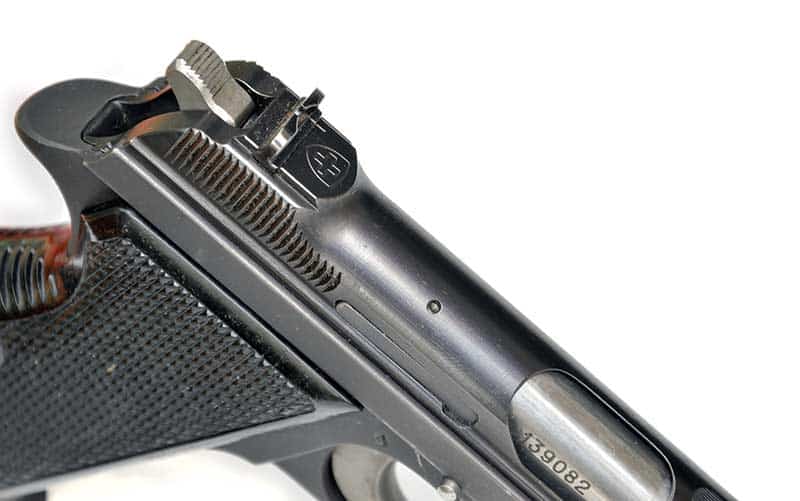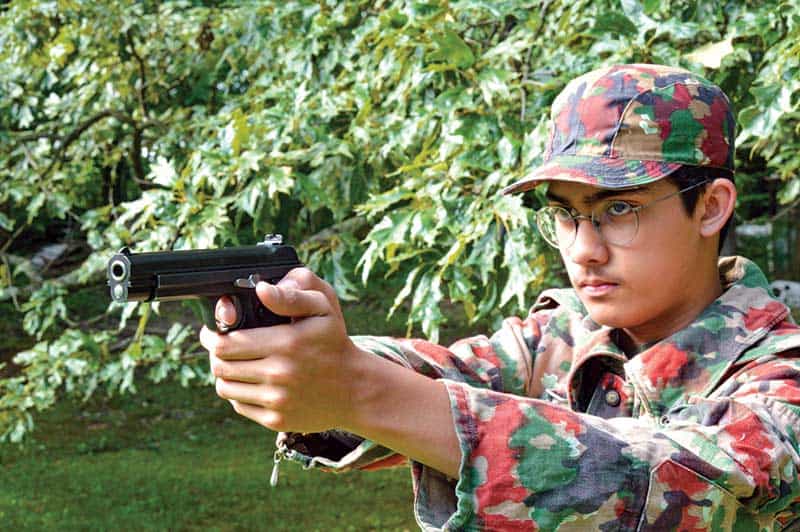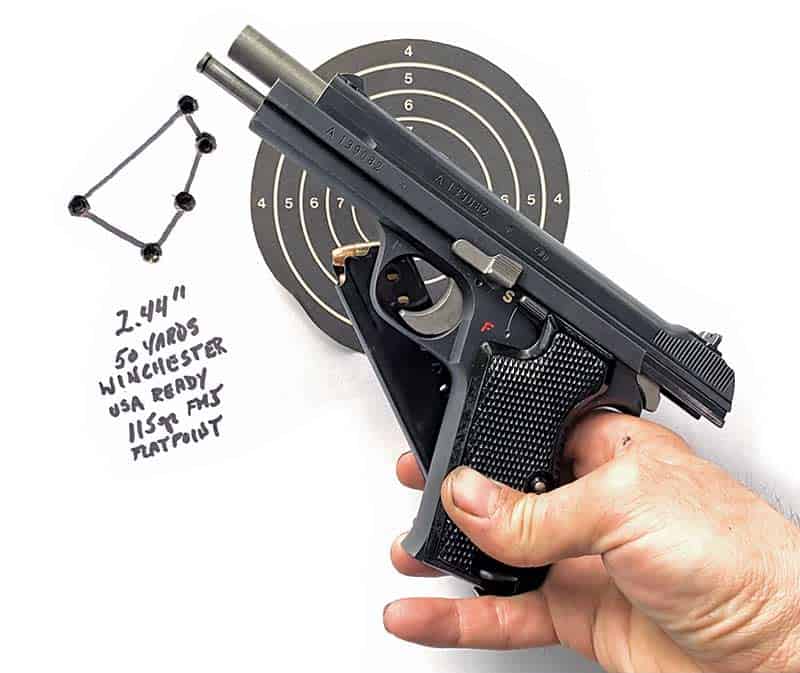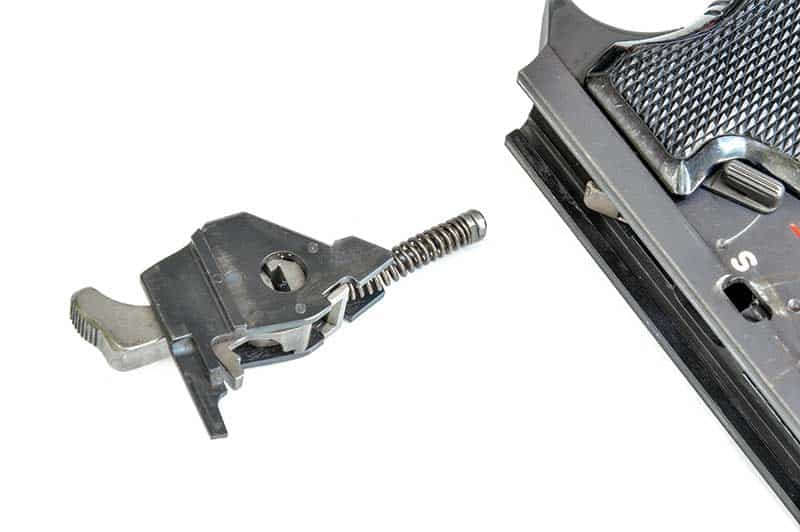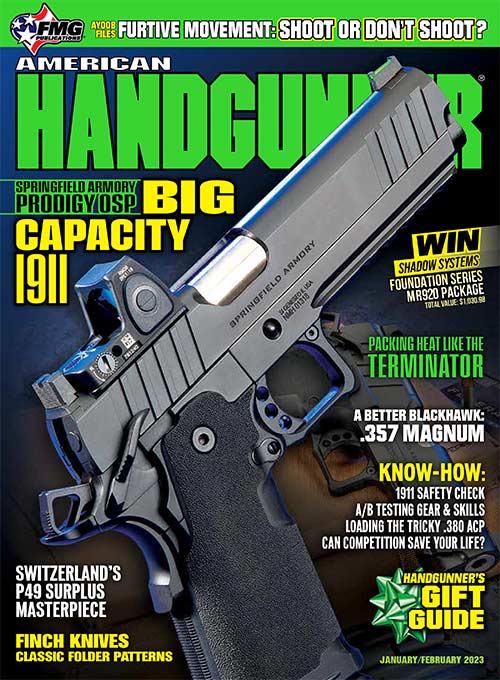Switzerland’s P49 Pistol: Surplus Masterpiece…That Outshoots 9mm Carbines
Despite my cynicism, I am genuinely delighted when a gun I’m testing performs up to the manufacturer’s claims. As a historian, I’m even more delighted when legendary arms live up to the hyperbole built around them. The P49 (Pistole 49), Switzerland’s standard issue military sidearm from 1949 to 1975, is one of those vintage guns with a reputation that seems too good to be true. I’ve always wanted to test one, but their rarity and high price tag were obvious obstacles.
Finally, my gun collecting daimonion led me to an online reconnaissance of Centerfire Systems and discovery of several excellent condition P49 pistols. They cost a mere $2,999 each. While the price tag probably represents several mortgage payments for many of us, most of us are not advanced collectors of Cold War military handguns. “Are those people mentally ill?” you ask. Not especially. They know the P49 is to military autoloaders what the Rolex is to wristwatches: incredibly accurate, made with great Swiss precision from quality materials and fabulously expensive. I should explain I didn’t buy this pistol. I have Rolex tastes but Timex pockets. The folks at Centerfire Systems were nice enough to loan me a P49 for this story.
Precision Requirements
The P49 was developed and built by Schweizerische Industrie Gesellschaft (SIG) in Switzerland to compete for the contract to replace the Swiss military’s aging P06/29 lugers. Take note that in SIG’s commercial designation, the P49 was the P210-2, and they ultimately sold variations of the P210 to discriminating civilian shooters, West German Border Police and the Armed Services of Denmark. These were all fine guns, but my focus was the Swiss military P49, whose specifications required every pistol to fire groups under 5 cm at 50 meters using match-grade ammo. That’s more than target pistol accuracy but remember … the Swiss are shooting enthusiasts.
Swiss military P49s are identified by the “A” serial number prefix stamped on the barrel, slide and frame and a lanyard loop on the left grip. Serial numbers began at A100001 in 1949 and ended with A213110 in the early 1970s. Just over 113,000 were made. The P49 I tested was probably made in the mid- to late 1960s and had typical checkered plastic grips (production began with grooved wooden panels) and improvements to the safety and slide release contact surfaces to make them easier for the thumb to get purchase.
The test pistol was also marked with a “P” on the side of the trigger guard, indicating it had legally passed from military to civilian ownership. Scotch-taped under the grip panel, I found the name and address of what I presume was its last civilian owner. The gun shows wear to the finish on the edges and high spots, but no signs of abuse, and appeared to have an excellent barrel. Frankly, it was in magnificent condition for a 50+-year-old surplus military pistol. The Swiss take care of their guns.
Shooting A Classic
To test the P49, I set a 6″ black bullseye on a 2′ square piece of white poster board at 50 yards. I shot the pistol with a two-hand hold from the bench over a solid rest, specifically “The Rock” rest made by Caldwell Shooting Supplies I customarily use for test-firing rifles. I had no 124-grain 9x19mm Swiss military match ammo, but I did have a box of Winchester’s “White Box” with the typical 115-grain FMJ ball bullet and a box of USA READY sporting a flat-nosed 115-grain FMJ bullet, which sort of looks like it should be a 124-grain bullet.
I tested the White Box first with unspectacular results. The average spread for a five-shot group was 7″. Unimpressed, I switched to the flat-nosed Winchester USA READY. My groups shrank immediately and dramatically. My average five-shot group was now 2.27″. This translates to 5.77 cm. It’s not quite the 5 cm specification the gun needed to leave the factory over half a century ago, but it isn’t new, I didn’t have Swiss ammo, a machine rest or the highest degree of target shooting skill!
The P49 obviously delivers in the accuracy department. If it isn’t the most accurate 9mm military service automatic anymore, it can’t be very far removed from that honor. Hmmm … How did they do that without sacrificing reliability? The answer is, at great expense, via good design and tight manufacturing tolerances.
Origin Story
The project to find a replacement for the Swiss P06/29 Luger started in the late 1930s. It was a tall order because the Swiss-made Luger was a superbly accurate, target-grade gun, thanks to its design, grip ergonomics, quality manufacture and bottleneck 7.62x21mm (.30 Luger) caliber. What they weren’t was particularly powerful or reliable in dirty field conditions. The Swiss military wanted a more broadly reliable and powerful 9x19mm caliber sidearm that was at least as accurate.
SIG looked at the latest military autoloaders and decided to base their new pistol on the French military’s 7.65x20mm caliber Model 1935-A pistol. They obtained the necessary licenses to utilize its specific patents, which is why the Swiss P49 bears a close external resemblance to the French gun. The Swiss kept its grip angle, Browning style, locked breech, short-recoil, tilting-barrel operating system, its front and rear anchored full-length recoil spring guide-rod, bushing-less barrel, unique modular hammer mechanism and pivoting trigger. The changes SIG engineered resulted in the most expensive, most accurate and, many argue, the best, standard military sidearm ever made. This process took about 10 years, so the Swiss military clearly wasn’t in a rush. In fact, they weren’t even SIG’s first customer for the new gun.
Design Tweaks
To increase accuracy, SIG tightened up the relationship between the barrel and recoil spring by eliminating the pair of 1911-inspired rotating barrel links on the bottom lug of the Model 1935-A barrel and substituted an angled slot integral to the lug. The somewhat “V” shaped slot unlocked the barrel from the slide by camming against the horizontal pin of the slide stop under recoil. By eliminating two parts from the mechanism, tolerance stacking was reduced, and the slot’s broader width also held the barrel in more rigid horizontal alignment throughout the recoil cycle.
The most important SIG design changes to enhance accuracy was employing full-length guide rails on the frame and slide. By doubling the length of the rails for full-length contact between slide and frame, SIG reduced the amount of possible deflection between those parts at their extreme ends making for more consistent lock up. SIG hand-fitted the P49 slides and frames together, and the slide, frame and barrel are identically serial numbered.
While mechanical accuracy is a function of engineering and precision manufacturing, practical accuracy is tied to the human condition. Grips, sights, balance and trigger contribute to making the P49 a great shooter. Unlike later SIG service pistols, the P49 slide isn’t towering clumsily over your shooting hand. Its slim snout and comparatively sharp grip angle (about three degrees more than a 1911, but 12 degrees less than a P08 Luger) make the P49 feel more like a target pistol.
It has an excellent two-stage trigger pinned into the frame at the top that pivots smoothly with almost no lateral wiggle. None of your trigger-pull effort is diverted or wasted, and it seems less sensitive to finger position. The first stage take-up is of no consequence, and after stopping against the second stage, it breaks crisply at around 5 lbs. After putting 50 rounds through the P49 from the bench at 50-yard targets, it was apparent this pistol was as (or more) accurate than some popular 9mm carbines I’ve tested. Guns like this make a guy wish he’d made smarter financial decisions along the road of life. Cryptocurrency seemed like such a smart bet …
For more info: CenterfireSystems.com

